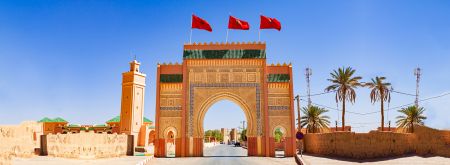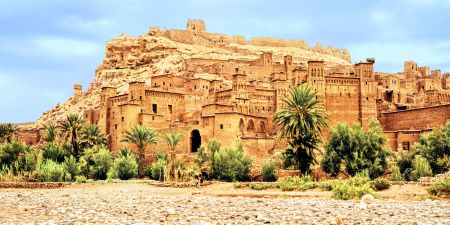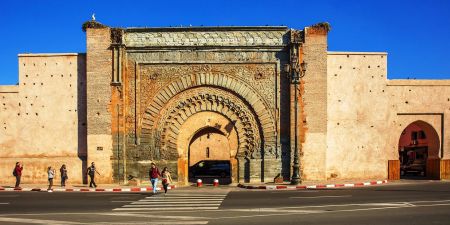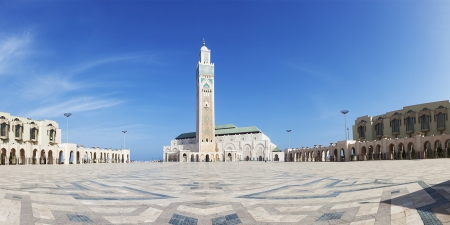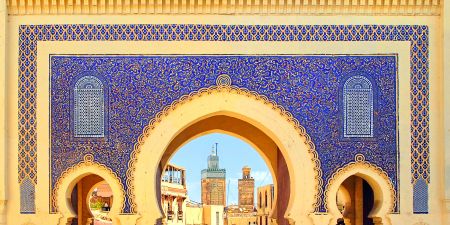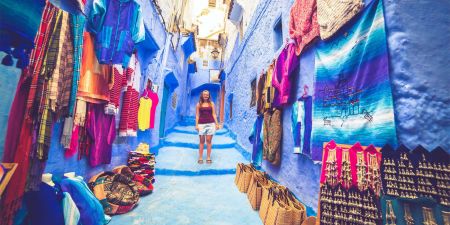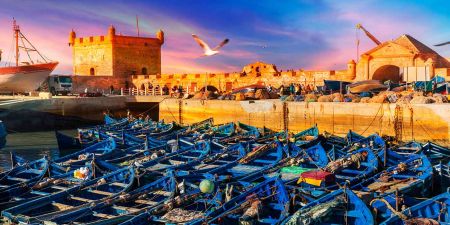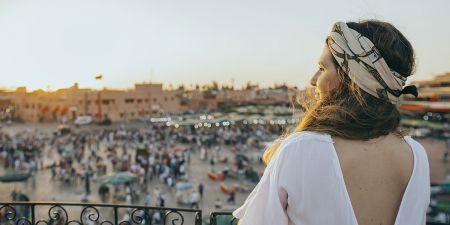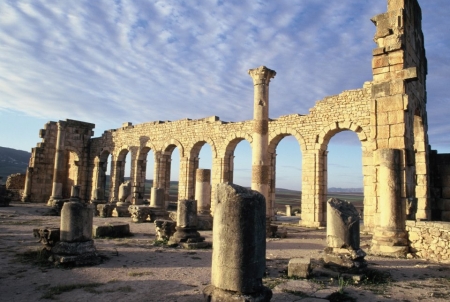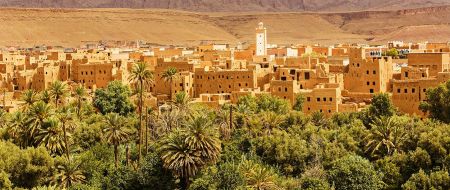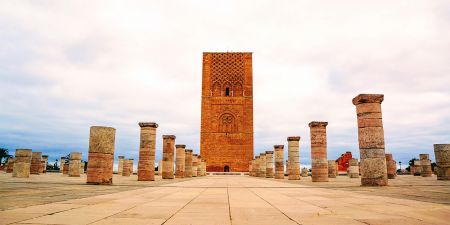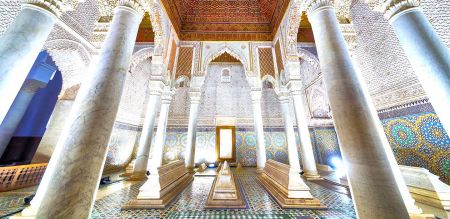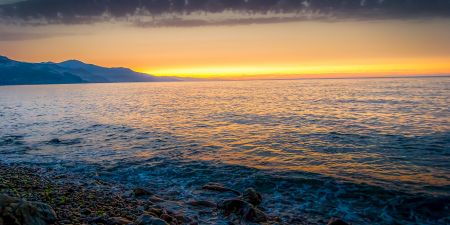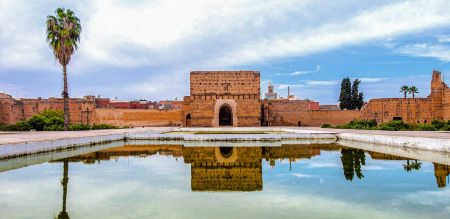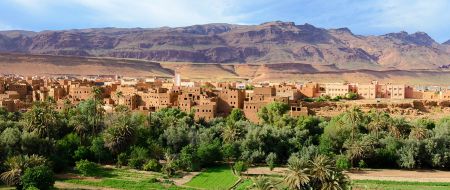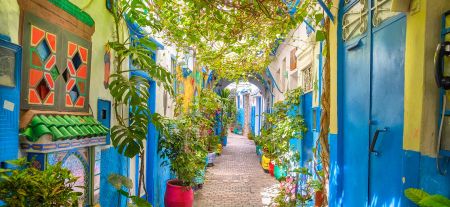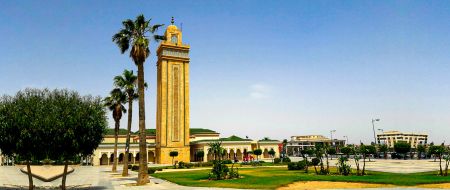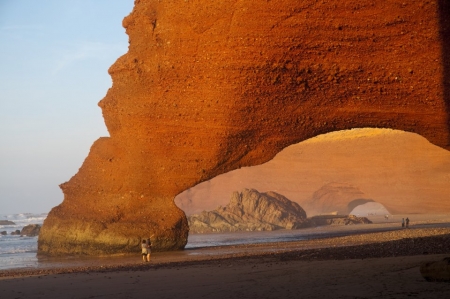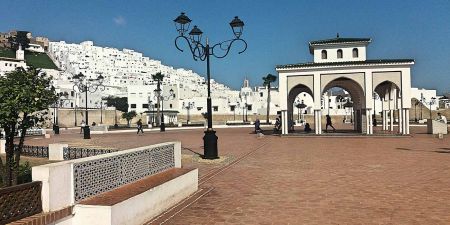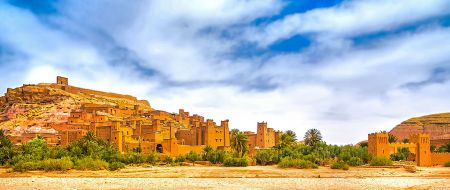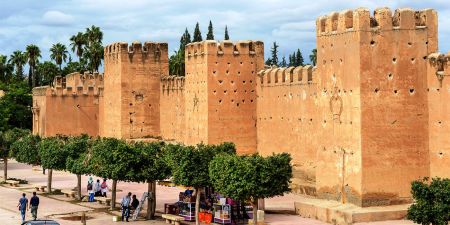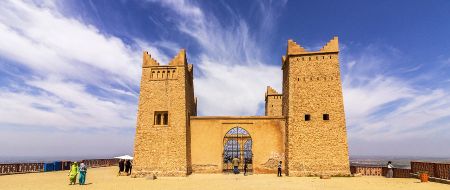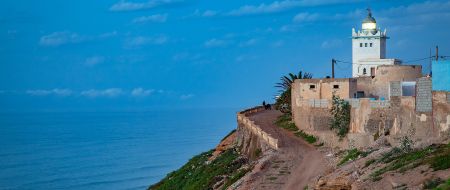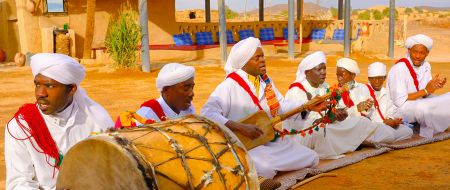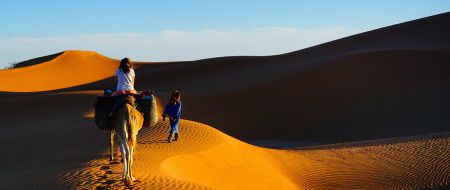Tangier Travel Guide: Essential Tips from a Morocco Expert

Located at the western entrance to the Strait of Gibraltar, Tangier was once a top destination for the 1960s literary and artistic set. Even though it is no longer the haunt of famous artists and writers, it is still a spot where you can find traces of art in Morocco.
Tangier travel guide enthusiasts often discover that this Moroccan city sits just across the Strait of Gibraltar from Spain, making it an easily accessible gateway to North Africa with ferry rides taking only about an hour from Tarifa. Once an "international city" from the 1920s to the 1950s governed by nine different powers, Tangier boasts a uniquely cosmopolitan atmosphere unlike anywhere else in Morocco.
When exploring things to do in Tangier Morocco, you'll find yourself drawn to its vibrant medina and souks, which are among the most lively in the country. The city has undergone significant revitalization in recent years, with a fresh can-do spirit making it more enjoyable and less stressful for visitors. During your visit, you can also witness the magical meeting point of the Mediterranean Sea and Atlantic Ocean at Cape Spartel, explore the legendary Caves of Hercules (believed to have been used since 6000 BC), and admire the 160-year-old lighthouse depicted on the 200 dirhams banknote. Additionally, history enthusiasts will appreciate the Tangier American Legation Museum, which holds the distinction of being the first U.S. public property abroad.
Discover Tangier’s charm with our tailored Morocco travel packages from bustling medinas to coastal wonders. Start your journey today!

Location of Tangier
The city of Tangier is located on a bay of the Strait of Gibraltar, almost 17 miles (27 km) from the southern tip of Spain. It also lies 40 miles (65 km) to the southeast Of Tétouan.
How to Get There?!
By Air
Tangier Airport transports over 1 million passengers every year. Many major European cities service Tangier including Paris, Madrid, Brussels, and Amsterdam. Domestic flights are available as well, from cities like Marrakech, Ouarzazate, and Casablanca.
By Train
Tangier train station lies 4 km southeast of the ferry port terminal and the bus station. If you are to head to Fez or Marrakesh, then you have to arrive by Tangier first as it is the best option for a rail connection to the mentioned destinations.
By Bus
The main long-distance bus station of CTM is located right outside the ferry port terminal. Moving to Morocco by bus is really easy and accessible. Everyone can catch a bus to any of the major cities in Morocco.
Planning Your Trip to Tangier
Best time to visit Tangier
To make the most of your Tangier travel guide experience, timing is everything. April and October stand out as the ideal months to visit this Moroccan coastal city. These months offer the perfect balance of pleasant temperatures, minimal rainfall, and smaller crowds.
Spring (March-May) brings mild temperatures ranging from 19-23°C (66-73°F) with only 3-6 days of rain per month. The city's parks become lush and green, making it perfect for exploring. Nevertheless, be aware that Ramadan shifts approximately two weeks earlier each year, which might affect the opening hours of restaurants and shops.
Fall (September-November) offers another excellent window with temperatures between 20-27°C (68-81°F). October specifically hits the sweet spot with warm days, fewer tourists, and reasonable prices. November sees increasing rainfall, with about 8 rainy days monthly.
Summer months (June-August) are best avoided unless you truly love heat. Temperatures regularly climb to 29°C (84°F) with high humidity. Furthermore, the city becomes crowded with tourists, driving up prices and creating long lines at attractions.
Winter (December-February) brings cooler weather with highs around 17-18°C (63-64°F) and lows of 8-10°C (46-50°F). While this season sees 8-10 rainy days per month, you'll enjoy significantly fewer tourists, except during December's holiday season when crowds return.
How many days to spend
For most travelers, two days in Tangier provides the perfect balance. This timeframe allows you to fully explore the Medina on one day and take a worthwhile day trip to Cap Spartel and the surrounding beaches on the second.
If you're planning to visit multiple Moroccan cities, Tangier works beautifully as a two-day introduction to the country. The city is quite walkable, particularly around the Medina area, making it easy to see the core attractions efficiently.
Those interested in architecture, photography, and textiles might consider extending their stay, especially if they enjoy unhurried exploration and want to discover hidden gems beyond the major sites. Moreover, if you're contemplating side trips to places like Essaouira, add at least two full travel days plus additional time for sightseeing there.
What to pack for the climate and culture
Packing appropriately for Tangier requires consideration of both climate and cultural norms. The keyword to remember is "layers".
For clothing, prioritize:
- Modest, loose-fitting attire - Both men and women should cover their shoulders and knees in public spaces
- Breathable fabrics - Cotton and linen work well, though athletic fabrics are better for humid days
- Light jacket or fleece - Evenings can be surprisingly cool, especially in spring, fall, and winter
- Comfortable walking shoes - Tangier's paths can be uneven and dusty, making sturdy footwear essential
Women should pack longer skirts, maxi dresses, or loose pants rather than shorts or tight clothing. Additionally, bringing a scarf helps cover hair when visiting religious sites. Men should avoid sleeveless shirts and consider packing polo or button-up shirts to better blend in with locals.
For swimming, opt for more conservative swimwear—one-piece suits or tankinis for women and swim shorts rather than briefs for men. Furthermore, remember to pack high-SPF sunscreen and UV-blocking sunglasses to protect yourself from the intense Moroccan sun.

Where to Stay in Tangir?
The city of Tangier has various options for affordable accommodation, especially riads. It is recommended to book your first night ahead of your visit to avoid any issues.
La Tangerina: Located in the Kasbah, it is a beautifully restored boutique hotel that only includes 10 rooms. The hotel offers you the chance to enjoy meals on the rooftop terrace and traditional Moroccan food. Prices start at 45 Euros per night.
Dar Jameel: This is a perfect choice if you want to be in the heart of the Media. This hotel has five levels that offer eight sprawling suites around an interior courtyard. Rooms are decorated beautifully with traditional furniture. Prices start from 48 Euros per night, including breakfast.
Dar Nour: This is a small boutique hotel in the Kasbah that is convenient to all the major sights. The terrace of the rooftop is the highlight of the place. It overlooks the town and the ocean. It contains seven rooms that are decorated with traditional Moroccan carpets and furniture. Prices start from 63 Euros per night, including breakfast.
Dar Nilam: Located a mile from the town center and close to the beach, this hotel is really small but excellent. It offers personalized service and unique decorations. It has only five rooms, a small garden, and a pool. Traditional Moroccan food is served at dinner. Prices start from 80 Euros per night.

Customize Your Dream Vacation!
Get in touch with our local experts for an unforgettable journey.
Plan Your TripEssential Travel Logistics
Mastering the logistics of your Tangier visit ensures a smooth experience in this vibrant Moroccan port city. From transportation choices to connectivity options, these practical details form the foundation of your adventure.
Ferry vs. flight: pros and cons
Deciding how to reach Tangier depends on your priorities regarding time, budget, and experience. The ferry option connects Spain to Morocco through several routes. The Algeciras-Tangier crossing takes approximately two hours and costs around 460 Euros for a family of four with a car. This route proves particularly efficient compared to the Ceuta-Tangier crossing, which can be considerably longer.
Flying to Tangier offers speed but comes with different considerations. A one-way flight from Paris to Tangier costs approximately 900 Euros for a family of four, excluding stopovers. However, this option eliminates the need for lengthy drives through Spain.
For travelers seeking a unique experience, helicopter services connect Algeciras or Malaga to Ceuta, with prices ranging from 35 to 60 Euros per person for a ten-minute flight. Consequently, each transportation method offers distinct advantages:
- Ferry benefits: Scenic views, ability to bring your vehicle, no luggage restrictions
- Flight advantages: Time efficiency, less physical fatigue, direct access to the city
First-time visitors should note that the FRS ferry company offers guided packages from Tarifa that include transportation and city tours.
Getting around the city safely
Once in Tangier, Petit blue taxis provide affordable transportation around the city. Fares should not exceed 20 dirhams for short trips, but remember these are negotiable. When arriving at the port, be cautious of touts and unofficial guides who may approach you.
Indeed, the port area is known for people offering unsolicited assistance. If someone approaches claiming the HoHo buses aren't running, this is typically untrue - they're hoping you'll hire them instead. Fortunately, despite these minor hassles, Tangier is generally considered remarkably hassle-free compared to other Moroccan cities.
Currency, SIM cards, and internet access
The Moroccan dirham (MAD) is the official currency in Tangier. Currency exchange services are available at Ibn Batouta International Airport, operating 24/7. However, for better rates, visit exchange offices in the city center along Avenue Pasteur, where numerous banks and money changers operate.
For staying connected, three major mobile providers offer services:
- Maroc Telecom: Best coverage in both urban and rural areas with tourist packages ranging from 150-250 MAD for 10GB data and 200 minutes valid for 30 days
- Orange Morocco: Offers competitive rates with tourist SIM packages costing 120-170 MAD for 12GB data and 500 minutes, valid for 30 days
- Inwi: Budget-friendly option with packages from 100-150 MAD for 8GB data and 400 minutes, valid for 30 days
You can purchase SIM cards at the airport or official provider stores in the city. Airport kiosks often provide free SIM cards for all three companies. For data plans, a 50 dirham package typically offers 5-10 GB, depending on the provider.
Certainly, having a local SIM card eliminates dependency on public Wi-Fi networks, which can be both inconvenient and insecure. Furthermore, it enables essential services like maps, ride-booking, and staying in touch with family and friends throughout your Tangier adventures.

Things to Do in Tangier
Discovering the best things to do in Tangier Morocco means immersing yourself in a city where African and European influences blend seamlessly. From historic sites to natural wonders, Tangier offers experiences that will captivate your senses.
1. Medina
Medina or Old Town is a vibrant place. Its alleyways are filled with teahouses, brothels, and shops. The Tangier Medina has always fascinated artists, Eugène Delacroix, Henri Matisse, Paul Bowles, Tennessee Williams, Jean Genet… the list can be continued.
All have fallen for the charm of Petit Socco Square and its cafés, especially the famous Tingis. It is where old men sit for hours drinking tea and playing backgammon.
The old Mendoub Palace, built in 1929, situated to the North of the medina, is now a mansion for foreign VIPs.
The museum of the old American Legation is in the Southern extremity. Its paintings are on display, and one room is dedicated to the American writer Paul Bowles.
You should leave the medina by Grand Socco Square, a lively spot in the evening, and enter the new town.

2. The New Town
You can enjoy a pleasant walk in Mendoubia Park, situated north of Grand Socco Square. A giant banyan tree and a dragon tree, alleged to be 800 years old, highlight the visit.
Take rue de la Liberté, a shopping thoroughfare, to the Place de France, which is the heart of the modern town. There you will find the celebrated Grand Café de Paris and the El Minzah Hotel, which were both haunts of the famous names of arts and literature of the 19th and early 20th centuries.
This spot is still very fashionable. You will have an amazing view of the medina and the port, and the bay of Tangier from Faro Square with its canons. The mythical Hafa café overlooks the Strait of Gibraltar from the top of the cliff.
3. The Kasbah
The Kasbah dominates Medina's northern section. The gate of the Kasbah opens into a large courtyard leading to the Dar el-Makhzen Palace and Kasbah Museum. Built in the 17th century, the palace’s carved wooden ceilings and marble courtyard display the intricacies of Moroccan craftwork.
4. Kasbah Museum
Kasbah Museum is one of the top places in Morocco for history enthusiasts. The museum displays an amazing number of exhibits that represent Morocco’s complicated history. The Antiquities Collection exhibits finds from the country's prime ancient Roman sites like Lixus and Volubilis. It also includes a life-size model of a Carthaginian tomb.
The Fez Room is an interesting section. It contains silks and manuscripts, besides displaying centuries-old ceramics decorated from golden yellow to the famous Fes-blue.
5. Take in the views at Cap Spartel
Located 14 kilometers west of Tangier, Cap Spartel marks the northwestern tip of Africa where the Mediterranean Sea meets the Atlantic Ocean. The promontory rises 315 meters above sea level and houses Morocco's oldest lighthouse, built over 150 years ago.
For the most magical experience, visit Cap Spartel at sunset when the light creates spectacular views over the Atlantic. The lighthouse itself stands 25 meters tall from the ground and 95 meters above sea level. Upon climbing the spiral staircase, you'll be rewarded with a panoramic 360-degree view of the surrounding landscape and can watch cargo ships navigating the Strait of Gibraltar.
6. Explore the Caves of Hercules
Just 14 kilometers from Tangier lie the mythical Caves of Hercules, where legend claims Hercules rested after separating the European and African continents. The cave system extends for 30 kilometers and features two openings - one to land and one to sea.
The sea-facing opening remarkably resembles the outline of Africa, creating a breathtaking contrast between the dark cave and the deep blue sea. Inside, you'll find carved walls, lighting systems producing pleasant contrasts, and occasionally, local entertainers. The entrance fee is approximately 80 dirhams (about €7) for non-Moroccans, making it an affordable adventure.
7. Enjoy a camel ride on the beach
Complete your Tangier experience with a camel ride along the shores of Achakar Beach near the Caves of Hercules. These rides cater to all ages, from short experiences for beginners to more extended journeys for the adventurous.
The experience typically begins with pickup from your accommodation in an air-conditioned vehicle. Subsequently, you'll be guided to the beach where each person can ride their own camel (even children as young as 7) while enjoying stunning coastal views. Many tours combine this activity with visits to Cap Spartel and the Caves of Hercules, creating a perfect half-day excursion from the city center.
Tips for Traveling with Kids or in Groups
Traveling to Tangier with family or friends adds extra dimensions to your Moroccan adventure. With proper preparation, you can ensure everyone enjoys the experience safely and comfortably.
Keeping kids safe in crowded areas
Tangier is generally safe for families, yet children should be closely supervised, primarily in busy areas where pickpocketing might occur. In the labyrinthine Medina and bustling souks, hold your children's hands at all times, as it's easy to get separated in the narrow, crowded passages. Consider adding a bracelet with your contact information to your child's wrist as an extra precaution. Before exploring crowded areas, establish a meeting point in case anyone gets separated.
Family-friendly attractions and parks
Despite not having many kid-specific attractions, Tangier offers several family-friendly options. The wide promenade between the city and sea features excellent playgrounds with equipment for all ages, including trampolines and swings. Tanger City Mall contains a Netherlands-themed play space called Super Land on its top floor, complete with climbing walls, bumper cars, and a soft play zone. The colorful streets of the Medina often fascinate children, offering a treasure hunt atmosphere as you explore. Parc Perdicaris provides a refreshing break from city bustle with wooded trails and playgrounds.
Where to find snacks and clean restrooms
Carrying familiar snacks for selective eaters is essential when traveling with kids. Visit Carrefour supermarkets throughout the city for international products, bottled water, and child-friendly snacks. Plan your itinerary to include regular rest breaks at cafés or restaurants that offer clean facilities. Initially, make a list of family-friendly establishments near major attractions.
Dealing with heat and sun exposure
Morocco's sun can be overwhelming, even more so for children and seniors who react sensitively to high temperatures. Apply high-SPF sunscreen (minimum SPF 30, preferably SPF 50 for children). Watch for heat illness symptoms, including dizziness, nausea, fatigue, or confusion. Schedule outdoor activities during mornings, taking extended breaks during the hottest afternoon hours. Opt for loose, airy clothing that covers shoulders and limbs, both for sun protection and cultural respect.
Local Food and Shopping Guide
Exploring Tangier's culinary scene and vibrant markets offers a feast for all your senses. This part of your Tangier travel guide focuses on authentic experiences beyond the typical tourist path.
Where to eat authentic Moroccan food
Tangier boasts several hidden gems for genuine Moroccan cuisine. Chez Hassan, near the medina, serves excellent seafood tajine and kebabs for under 100 dirhams per meal. Meanwhile, Bachir's offers traditional dishes including harrara soup and bissara fava bean soup at budget-friendly prices. For seafood enthusiasts, head to the restaurants near the harbor where fishing trawlers dock daily. Restaurant Al Maimouni in the medina prepares delicious lamb tagine with prunes for approximately 90 dirhams.
Best places to buy spices and souvenirs
The Grand Socco marketplace surrounding 9 April 1947 Square serves as the entrance to the medina and offers everything from fruits to spices. For artisanal goods, visit Rue Mouahidines, where you can watch craftspeople creating leather products, pottery, and jewelry. Fondouk Chejra, the weavers' market outside the medina, houses 37 small shops with craftsmen working traditional looms to create rugs and textiles. Accordingly, Bleu de Fès specializes in certified original Berber rugs if you're seeking high-quality carpets.
How to avoid tourist traps
Bargaining is expected, but approach it respectfully. Cruise ship passengers often overpay dramatically in the Medina. Fortunately, authentic spices are best purchased at Carrefour or Marjane supermarkets rather than tourist stalls where products might be adulterated. For argan oil, check the scent—real argan shouldn't smell like paprika or turmeric. Furthermore, confirm prices before purchasing anything, as initial asking prices might be inflated by 60% or more.
Tipping etiquette in restaurants and markets
In Moroccan restaurants, tipping practices vary widely. Local cafés typically receive 5-10% of the bill or 5-10 dirhams per person. Upscale restaurants generally warrant 10-15% unless service charges are already included. Street food vendors appreciate 1-2 dirhams per person. Market vendors expect 5-10 dirhams if you take their photo. Above all, remember that while tipping isn't mandatory, it forms a meaningful portion of income for many workers.
Tangier stands as a magnificent gateway to Morocco, blending North African traditions with European influences unlike any other city in the country. This once-international city has undergone remarkable revitalization, transforming into a vibrant destination that rewards visitors with rich cultural experiences and stunning coastal beauty.
Your Tangier adventure can easily fit into a two-day itinerary, though extending your stay allows deeper exploration of hidden gems beyond major attractions. Whether you arrive by ferry across the Strait of Gibraltar or fly directly into Ibn Batouta International Airport, the city welcomes you with relatively hassle-free experiences compared to other Moroccan destinations.
Remember that timing your visit makes all the difference. April and October offer perfect weather conditions with fewer crowds, creating ideal circumstances for wandering through the 500-year-old Medina or watching the magical meeting of two seas at Cap Spartel. Additionally, packing appropriate clothing respects local customs while ensuring your comfort throughout changing daily temperatures.
The city truly shines through its contrasts - ancient cave systems alongside modern promenades, traditional souks near contemporary shopping malls, and authentic local eateries serving delicious Moroccan cuisine just steps from international restaurants. These juxtapositions create a fascinating tapestry that appeals to travelers of all ages and interests.
Most importantly, Tangier rewards those who approach it with cultural sensitivity and openness. Learning basic Arabic phrases, respecting local customs, and engaging with residents transforms your journey from mere sightseeing to genuine cultural immersion. Consequently, you'll leave with not just photographs but meaningful connections and deeper understanding.
Tangier might not possess the overwhelming sensory experience of Marrakech or the blue-washed streets of Chefchaouen, yet its charm lies precisely in this balance - offering authentic Moroccan experiences without overwhelming first-time visitors. This perfect introduction to Morocco will undoubtedly leave you planning your return to explore more of this captivating country.
FAQs
Q1. What are some must-see attractions in Tangier?
Key attractions include wandering through the historic Medina, taking in panoramic views at Cap Spartel, exploring the legendary Caves of Hercules, visiting the Kasbah Museum, and enjoying a camel ride on the beach.
Q2. How many days should I spend in Tangier?
For most travelers, two days in Tangier provides a good balance. This allows time to explore the Medina on one day and take a worthwhile day trip to the surrounding areas on the second day.
Q3. What's the best way to get around Tangier safely?
Petit blue taxis offer affordable transportation around the city. Be cautious of touts and unofficial guides, especially at the port. The city is generally considered hassle-free compared to other Moroccan cities.
Q4. What should I pack for a trip to Tangier?
Pack modest, loose-fitting clothing that covers shoulders and knees. Bring comfortable walking shoes, a light jacket for cool evenings, and high-SPF sunscreen. Consider packing a scarf for women to cover their hair when visiting religious sites.
Q5. Where can I find authentic Moroccan food in Tangier?
While the article doesn't specifically mention Tangier restaurants, it's advisable to seek out simple local eateries rather than touristy spots. Look for places serving traditional dishes like tajines, couscous, and local soups for an authentic culinary experience.


